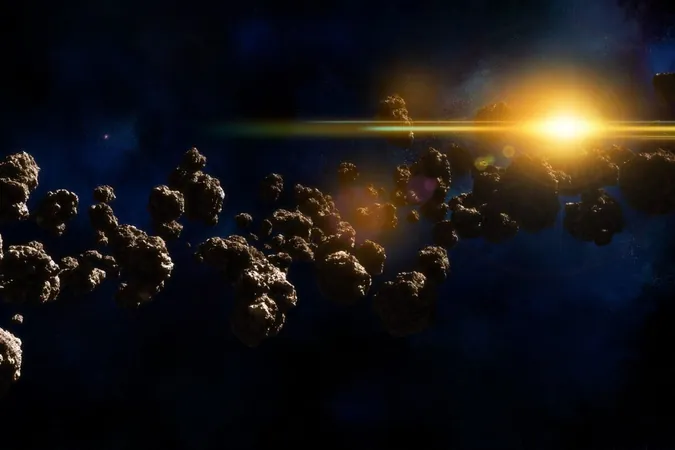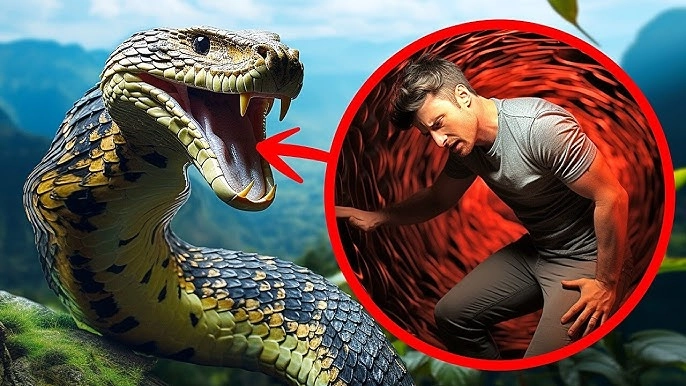
Asteroid Alert: Webb Telescope Discovers 138 Tiny Rocks That Could Drift Towards Earth!
2025-01-02
Author: Sarah
Asteroid Alert: Webb Telescope Discovers 138 Tiny Rocks That Could Drift Towards Earth!
In a groundbreaking revelation, the James Webb Space Telescope (JWST) has unveiled the presence of 138 new asteroids in the main asteroid belt located between Mars and Jupiter. While the size of these asteroids may seem expansive—ranging from stadium-sized to the size of a bus—they are minuscule when compared to the vastness of our Solar System.
These findings represent the smallest asteroids ever detected in this particular region, an achievement that underscores the advanced capabilities of the Webb telescope. Astronomers have long been limited by the observational power of ground-based telescopes, meaning this discovery sheds new light on the tiny cosmic bodies that populate the asteroid belt.
A Glimpse into the Past of Our Solar System
The asteroid belt is thought to contain vestiges from the early stages of solar system formation, composed of remnants from the material that coalesced to create our Sun and its orbiting planets. Understanding these primordial rocks is crucial for piecing together how our planetary neighborhood evolved over billions of years.
Led by a team from the Massachusetts Institute of Technology (MIT), researchers tapped into Webb's data—specifically, observations of a distant star—to uncover these diminutive asteroids. This innovative approach has led to new insights about the history and formation of asteroids within the belt.
Uncovering Small Mysteries
The discovery of such small asteroids is pivotal for researchers in the field. According to NASA astrophysicist Tom Greene, who co-authored the study, "We now understand more about how small objects in the asteroid belt are formed and how many there could be." These small bodies likely originated from collisions involving larger asteroids and may pose a risk if they drift closer to Earth.
The Importance of Monitoring
This research is particularly relevant to NASA’s Asteroid Threat Assessment Project (ATAP), which aims to evaluate the potential consequences of a significant asteroid impact on Earth. Jessie Dotson, an astrophysicist at Ames Research Center and a member of ATAP, remarked on the importance of the Webb telescope's findings: "Understanding the sizes, numbers, and evolutionary history of smaller main belt asteroids is vital for planetary defense."
The Detection Technique
What’s astonishing is how these newfound asteroids were discovered. The team, consisting of Artem Burdanov and Julien de Wit from MIT, employed a novel analysis technique on over 10,000 images taken of the TRAPPIST-1 star system, originally conducted to investigate the atmospheres of exoplanets. Since asteroids emit bright infrared signals—the specific wavelengths that JWST is designed to capture—the researchers were able to identify these previously overlooked objects.
What Lies Ahead?
As astronomers continue to analyze the data from the James Webb Space Telescope, more discoveries are expected. With the number of near-Earth objects increasing, it's essential that scientists remain vigilant. Who knows what other secrets our Solar System holds, just waiting to be uncovered? Stay tuned for updates on this fascinating journey into space exploration!


 Brasil (PT)
Brasil (PT)
 Canada (EN)
Canada (EN)
 Chile (ES)
Chile (ES)
 Česko (CS)
Česko (CS)
 대한민국 (KO)
대한민국 (KO)
 España (ES)
España (ES)
 France (FR)
France (FR)
 Hong Kong (EN)
Hong Kong (EN)
 Italia (IT)
Italia (IT)
 日本 (JA)
日本 (JA)
 Magyarország (HU)
Magyarország (HU)
 Norge (NO)
Norge (NO)
 Polska (PL)
Polska (PL)
 Schweiz (DE)
Schweiz (DE)
 Singapore (EN)
Singapore (EN)
 Sverige (SV)
Sverige (SV)
 Suomi (FI)
Suomi (FI)
 Türkiye (TR)
Türkiye (TR)
 الإمارات العربية المتحدة (AR)
الإمارات العربية المتحدة (AR)